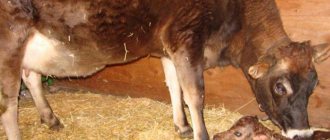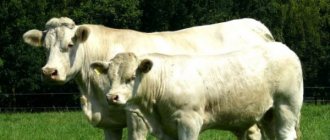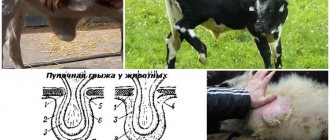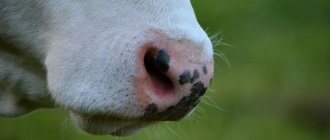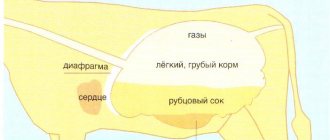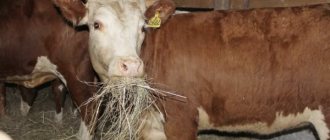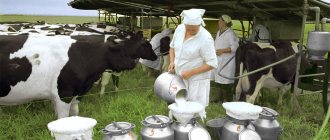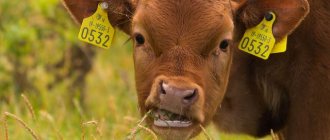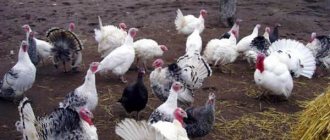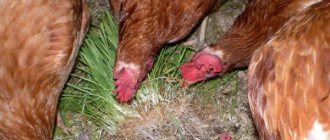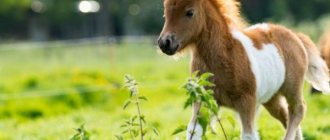I. General provisions
This Privacy Policy Statement (hereinafter referred to as the Statement) is an official document of Agroplanet LLC, located at: 426019, Udmurt Republic, Izhevsk, st. Regional, 6, office. No. 5. (hereinafter referred to as “), and determines the procedure for processing and protecting information about individuals (hereinafter referred to as Users) using services, information, services, programs (including loyalty programs) and products of the online store located on the domain name www .agroplaneta18.ru (hereinafter referred to as the Site).
Maintaining confidentiality is important for the Company, because the purpose of this Privacy Policy is to ensure the protection of the rights and freedoms of individuals and citizens when processing their personal data, including the protection of the rights to privacy, personal and family secrets, from unauthorized access and disclosure.
We have developed a Privacy Policy that describes how we process personal data - any actions (operations) or a set of actions (operations) performed using automation tools or without the use of such tools with personal data, including collection, recording, systematization, accumulation, storage, clarification (updating, changing), retrieval, use, transfer (distribution, provision, access), depersonalization, blocking, deletion, destruction of personal data.
Relations related to the processing of personal data and information about users of the Site are regulated by these Regulations, other official documents of the Operator and the current legislation of the Russian Federation
We process personal data lawfully and fairly, acting reasonably and in good faith and based on the principles:
— legality of the purposes and methods of processing personal data; - integrity; — compliance of the purposes of processing personal data with the goals predetermined and stated when collecting personal data, as well as with the powers of the Company; — compliance of the volume and nature of the personal data processed, methods of processing personal data for the purposes of processing personal data
This Privacy Policy governs any type of processing of personal data and personal information (any personally identifiable information and any other information related thereto) about individuals who are consumers of the Company's products or services.
This Policy applies to the processing of personal, personal data collected by any means, both active and passive, both through the Internet and without its use, from persons located anywhere in the world.
II. Collection of personal data
The purpose of processing personal data is to fulfill the Operator’s obligations to Users regarding the use of the Site and its services.
The processing of users' personal data is carried out with the consent of the subject of personal data to the processing of his personal data.
Personal data means any information relating to a directly or indirectly identified or identifiable individual (personal data subject) and which can be used to identify or contact a specific person.
We may request personal information from you at any time you contact the Company. The Company may use such data in accordance with this Privacy Policy. It may also combine such information with other information for the purpose of providing and improving its products, services, content and communications.
Below are some examples of the types of personal information that the Company may collect and how we may use such information.
WHAT PERSONAL DATA WE COLLECT
We may collect a variety of data/information including:
— first and last name, — postal address; - phone number; - E-mail address;
Personal data may also include additional information provided by Users at the request of the Operator in order for the Operator to fulfill its obligations to Users arising from the contract for the provision of services. The Operator has the right, in particular, to request from the User a copy of an identity document or other document containing the User’s first name, surname, photograph, as well as other additional data that, at the Operator’s discretion, will be necessary and sufficient to identify such User and will allow exclude abuse and violation of the rights of third parties.
When you attract others to our events and activities or invite them to communicate with us, the Company may collect personal information about these individuals that you provide, such as first name, last name, date of birth, postal address, email address and telephone number.
When processing personal data, we ensure the accuracy of personal data, their sufficiency, and, where necessary, relevance in relation to the purposes of processing personal data.
Feeding from 1 to 3 months
The main feeding phase ends in the fifth week. Gradual weaning from milk begins. A gradual reduction in the amount of wet food continues until the age of 75-85 days.
Feed consumption increases; by the age of two months, palatability reaches 1 kg. At 90 days, the calf eats up to 2 kg of feed or feed mixture prepared from crushed grain and BVMD. Hay is given to calves ad libitum; its consumption in two-month-old calves increases to 0.5 kg.
At this time, young animals are accustomed to succulent feed - green mass or silage. It is allowed to enrich the feed mixture with vegetables, fruits, and root crops. To avoid digestive disorders, do not feed succulent food ad libitum. Apparently, their daily portion should be divided into 2 doses of no more than 1 kg per head. Do not feed the calf contaminated or spoiled waste from vegetable processing. Growing root crops to feed livestock is not economically feasible.
Be sure to read:
How much and when does a cow give milk: average milk yield in liters
Three-month-old young animals actively graze and eat up to 10 g of grass per day. Regardless of the season, there should always be hay in the calf's feeder, which creates favorable conditions for the life of the proventriculus microflora.
III. Storage and use of personal data
Users’ personal data is stored exclusively on electronic media and processed using automated systems, except in cases where non-automated processing of personal data is necessary in connection with compliance with legal requirements.
HOW WE USE YOUR PERSONAL INFORMATION
The personal data we collect allows us to send you notifications about new products, special offers and various events. They also help us improve our services, content and communications. If you do not wish to be included in our mailing list, you can unsubscribe at any time by informing us at the specified contacts for feedback, as well as making changes in your profile settings on the site.
From time to time, we may use your personal information to send important notices containing information about changes to our terms, conditions and policies, and confirming orders you have placed and purchases you have made. Because such information is important to your relationship with the Company, you may not opt out of receiving such communications.
We may also use personal information for internal purposes, such as conducting audits, data analysis and various studies in order to improve the Company's products and services, as well as interact with consumers.
If you participate in a prize draw, contest or similar promotion, we reserve the right to use the personal information you provide to administer such programs.
COLLECTION AND USE OF NON-PERSONAL INFORMATION
We also collect non-personal personal information - information that cannot be directly associated with any specific person. We may collect, use, transfer and disclose non-personal information for any purpose. The following are examples of non-personal information we collect and how we may use it:
We may collect personal information such as occupation, language, zip code, unique device identifier, location and time zone in which a product is used in order to better understand consumer behavior and improve our products, services and communications.
We may also collect personal data/information about what the user is interested in on our website when using our other products and services. Such personal data/information is collected and used to help us provide more useful information to our customers and to understand which parts of our site, products and services are most interesting. For the purposes of this Privacy Policy, aggregate data is considered non-personal data/information.
If we combine non-personal information with personal information, the combined information will be treated as personal information for as long as the information is combined.
IV. Transfer of personal data
Personal data of Users is not transferred to any third parties, except as expressly provided for in these Rules.
The processing of the User's personal data is carried out without a time limit, in any legal way, including in personal data information systems using automation tools or without the use of such tools
The User agrees that the Operator has the right to transfer personal data to third parties, in particular, courier services, postal organizations, telecommunication operators, etc., solely for the purposes specified in the “Collection of Personal Data” section of this Privacy Policy
When specifying the user or with the user's consent, it is possible to transfer the User's personal data to third party counterparties of the Operator, subject to the acceptance by such counterparties of obligations to ensure the confidentiality of the information received, in particular when using applications.
Applications used by Users on the Site are hosted and supported by third parties (developers) who act independently of the Operator and do not act on behalf of or on behalf of the Operator. Users are required to independently familiarize themselves with the terms of service and personal data protection policies of such third parties (developers) before using the relevant applications.
The User’s personal data may be transferred at the request of authorized government bodies of the Russian Federation only on the grounds and in the manner established by the legislation of the Russian Federation.
The Operator blocks personal data relating to the relevant User from the moment of application or request from the User or his legal representative or the authorized body for the protection of the rights of personal data subjects for the period of verification, in the event of detection of unreliable personal data or unlawful actions.
DISCLOSURE OF INFORMATION TO THIRD PARTIES
In some cases, the Company may share certain personal information and data with strategic partners who work with the Company to provide products and services, or those who assist the Company in marketing products and services to consumers. We provide third parties with the minimum amount of personal data necessary only to provide the required service or conduct the required transaction.
Personal information will be provided by the Company only for the purpose of providing consumers with products and services, as well as to improve these products and services, and communications related thereto. Such information will not be provided to third parties for their marketing purposes.
To use your personal data for any other purpose, we will request your Consent to the processing of your personal data.
SERVICE PROVIDERS
The Company provides personal data/information to Companies that provide services such as: processing information, providing loans, fulfilling consumer orders, delivery, other types of consumer services, determining your interest in our products and services, conducting surveys aimed at studying our consumers or satisfaction quality of service. Such companies are committed to protecting your information regardless of their country of location.
OTHER PERSONS
The Company may be required by law, legal process, legal proceedings and/or on the basis of public requests or requests from government authorities in or outside the country of your residence to disclose your personal data. We may also disclose personal data/information about you if we determine that such disclosure is necessary or appropriate for purposes of national security, law enforcement or other matters of public importance.
We may also disclose personal data/information about you if we determine that disclosure is necessary to enforce our terms and conditions or to protect our business and our users. Additionally, in the event of a reorganization, merger, or sale, we may transfer any or all of the personal information we collect to the applicable third party.
Feeding and maintenance of replacement young animals
Replacement young animals
- these are animals used to replenish the main herd (cows, breeding bulls). Replacement heifers, in turn, are divided into breeding heifers, which are used as producers of replacement heifers.
Feed requirement
. The need for feed for growing animals and replacement young animals is determined depending on the purpose of the animals, their age, sex, planned weight gain, taking into account feeding requirements at different periods of life.
The main task in this case is to provide the necessary feeding conditions to obtain animals that meet the established requirements in general and have sufficient weight by the time of the first insemination. Therefore, the nutritional needs of reared young animals are established depending on the growth plan for young animals adopted on the farm.
The growth plan for breeding bulls is adopted at the level of live weight that meets the requirements of the elite-record or elite class.
To draw up a feed plan and rearing plan, it is important to know the annual nutrient requirements of young animals.
Feeding standards
. Based on a study of the nutritional needs of young animals, feeding standards for heifers, heifers, and bulls were drawn up.
Feeding rations
. Feeding rations for heifers and bulls up to 6 months of age are usually called feeding schemes. They are compiled in accordance with the rearing plan, as well as taking into account the physiological characteristics of the growth and development of calves, requirements for the quantity and quality of feed and feeding standards.
Feeding schemes are developed separately for heifers for the winter and summer periods; for suckling heifers and breeding bulls. Feeding plans indicate how much of each type of feed a calf should receive daily at a given age, as well as the total amount of feed fed for each month and for the first 6 months of rearing.
The schemes provide for early accustoming calves to plant foods and a gradual transition from one type of food to another. These are very important points that must be taken into account when feeding young animals.
In the feeding rations of replacement heifers, a significant proportion should be bulky feed, i.e., the type of feeding should be low-concentrate. It is advisable to make the diet from the same plant feeds that will form the basis of feeding the cows raised from these heifers. Up to 6 months of age, feeding rations are reviewed once a decade, and after 6 months - once a month.
It is necessary to constantly monitor the compliance of the diet with the needs of the growing animal. To do this, regularly monitor the general condition of the animal, as well as its growth and development through systematic weighing and measurements.
Feeding and maintenance of replacement heifers during the dairy period
. For heifers up to 6 months of age, several feeding schemes have been developed depending on the weight they should reach at the end of this period, the farm’s ability to consume milk for raising calves and the season of the year.
Breeding heifers and large breed heifers are raised on systems with more milk and dairy feed than service heifers and smaller breed heifers. The choice of feeding scheme depends on the area where the farm is located. In areas of whole-milk production, whole milk is used to feed calves, and recently, milk substitutes are used in ever-increasing quantities. In milk processing areas, feeding schemes are based on the use of significant quantities of skim milk (skim milk).
During the colostrum period, the calf's only food is mother's milk. The first time calves should be fed colostrum no later than 1 - 1.5 hours after birth.
During the first 5 days, colostrum is given 3-4 times a day, then 3 times at regular intervals, 1.5-2 liters per feeding. The temperature of colostrum should be 36-38°C.
Weak calves are given water more often (5-8 times a day) and in smaller portions. After each watering, the calf's face is wiped with a clean towel.
Particular care must be taken to follow the established feeding regimen and monitor the quality of colostrum. Violation of the feeding regime, rough handling of calves, noise in the dispensary lead to the fact that they drink worse and use colostrum. While watering and feeding calves, the calf must wear a clean white coat.
Receiving a sufficient amount of complete colostrum in good sanitary and hygienic conditions, calves grow quickly and become resistant to various environmental influences. From the 10th to 15th day, well-developed and strengthened calves are transferred to feeding with regular mixed milk or its substitutes.
Milk is given in accordance with the established feeding schedule (usually 3 times a day). Freshly milked fresh milk must be given to calves no later than 2 hours after milking, since bacteria then multiply quickly in it.
Therefore, if milk is not fed during this time, it must be refrigerated and stored in a cool place. Before drinking, the milk is carefully filtered, heated to 36-38°C and given from clean drinking bowls. After each watering, the drinkers are washed first with cold water, then with hot water and soda, rinsed and dried.
The calf should drink milk, like colostrum, slowly, in small sips. When drinking by hand, this is achieved through the use of drinking bowls of various designs.
The duration of drinking whole milk, as can be seen from feeding plans, is usually 3-4 weeks. Then skim milk is gradually included in the calves' diet, adding it in small quantities at first. Over the course of several weeks, the amount of whole milk is reduced until it is completely eliminated from the diet. At the same time, the return rate is increased. The skim milk is pasteurized before feeding.
The total duration of feeding dairy feeds and their substitutes, depending on the purpose of raising calves, should not be less than 3-3.5 months. Excessively abundant feeding of dairy feed is also undesirable: in this case, calves use plant feed worse.
Vegetable feed is included in the calves’ diet along with milk feed.
. Calves should be accustomed to plant foods with easily digestible, highly nutritious feed (sifted oatmeal and good leafy hay), which is facilitated by giving a warm hay infusion.
From the second week of life, calves begin to be fed good, small-stemmed hay, pouring it into feeders or hanging it in bunches in cages. For better eating, the hay is moistened with a hot 1% solution of table salt. In summer, it is beneficial to give hay to calves up to 3 months of age.
Almost simultaneously with hay, calves begin to get used to concentrates, giving them sifted oatmeal, prepared in the form of mash (oatmeal, oat milk) or mixed with milk. From the 20th day, calves are given about 100 g per day of dry concentrates. From 2 months of age, the diet includes a mixture of concentrated feeds, the best of which are oatmeal and corn flour, wheat bran, ground sunflower and flaxseed meal.
From 2-3 weeks of age, calves readily eat boiled potatoes, and from 1-1.5 months of age - finely chopped carrots and beets. From 2-3 months of age, you can already give raw, but well-washed and chopped potatoes. From 1.5-2 months, silage specially prepared for calves is included in the diet, initially in the amount of 0.3-0.4 kg per day, then its rate is gradually increased. From the 3rd month of life, you can feed good silage prepared for adult livestock.
With the cessation of milk feeding, the calves are completely transferred to plant feed.
From the 5th day, calves are given water boiled and cooled to 15-20°C 1-1.5 hours after drinking milk. If the calf is not given water, it greedily pounces on the milk and quickly drinks it in large sips. From the age of one month, calves can be given raw water (10-12°C). Do not mix raw and boiled water so as not to cause diarrhea in calves.
From an early age, especially with the transition to reverse, mineral feed (chalk, table salt, tricalcium phosphate, etc.), vitamins (fish oil, feed yeast, vitamin grass meal, animal feed) are introduced into the calf diet. Salt and chalk are first given to calves along with milk, then a special feeder for salt and chalk is placed in the cages or they are introduced into concentrates.
It is very useful to give calves hay infusion, acidophilus milk, and antibiotics. They begin to give hay infusion from 0.5 liters on the 5-6th day of life and gradually increase the rate to 3-5 liters. Calves are also gradually accustomed to acidophilus milk. Antibiotics are introduced into the diet as directed by veterinarians in a mixture with concentrates or with skim milk, drinking water.
If the farm does not have the feeds indicated in the schemes, they can be replaced with others that are easily digestible and highly nutritious, suitable for feeding calves. The replacement is carried out in such a way that with the replacement feed the calves receive an equal amount of feed units, digestible protein, as well as minerals and vitamins.
Particular attention should be paid to the reasonable saving of dairy feeds by using their substitutes. If there is no skim milk on the farm, then the calves are raised according to the scheme with whole milk, the amount of which is increased to compensate for the nutrients lost from skim milk.
Instead of skim milk, various mixtures are given: feed yeast and hay paste (instead of 1 kg of skim milk, 1 kg of hay infusion, 60 g of feed yeast and 80 g of sifted oatmeal); feed yeast and whey (50-60 g of yeast and 1 liter of whey instead of 1 kg of skim milk); a mixture consisting of 60 g of yeast, 80 g of oatmeal, 10 g of sunflower meal, 3.8 g of defluorinated phosphate, 20-25 ml of fish oil and 1 liter of water.
Content
. Newborn calves are kept in a dispensary in individual cages for 10-15 days. In most cases, dispensaries are located in the same barnyard, but isolated from the maternity ward. Currently, in order to reduce the incidence of calves, they use shift dispensaries located on both sides of the maternity ward. They are used alternately.
In some farms, in order to prevent hypothermia, newborn calves are kept in thermal cages for some time, then transferred to ordinary individual cages.
The temperature in the dispensary should be constant, without sudden fluctuations. If the dispensary is not heated and the temperature in it is below 5-7°C, the calves are covered with straw for the first few days. Exercise is arranged for them in the premises of the dispensary.
In summer, calves of preventative age can be kept in camps under sheds or in cages with gable roofs.
At 2-3 weeks of age, calves are transferred to a common calf barn, where they are kept in groups of 5-6 heads in one cage, and then in groups of 10-15 heads. Before transferring the calves, the cage is washed and disinfected with a 5% creolin solution. Calves of approximately the same age and weight are selected into one cage. It is possible to keep calves in unheated premises only when they are dry and draft-free, there is enough bedding on the farm, and the calf feeding level is high.
In winter, on good sunny days, calves can be walked from 10-12 days of age. First, they are released for 5-10 minutes, then the walking time is gradually increased and by 3-4 months of age it is increased to 1-2 hours. For walking, a special road must be cleared.
For preventive purposes, artificial ultraviolet irradiation of calves is carried out in the autumn-winter period.
The premises and the calves themselves must be kept in exemplary cleanliness. Calves are brushed every day and dirty areas are washed with warm water. Cleaning brushes are washed and disinfected with a creolin solution. The calf cages are cleaned daily and regularly whitewashed with freshly slaked lime.
Change the litter as it gets dirty. Passages and liquid drains are systematically cleaned and sprinkled with fresh lime. After each feeding, the feeders are cleared of uneaten remains, cleaned and washed daily.
In the summer, it is advisable to keep calves in camps, starting from the age of one month. The transfer to pasture is carried out gradually, first they are released for 1-2 hours after feeding, then over the course of 5-10 days the time spent on pasture is increased.
Calves are grazed during the cool part of the day; in the heat they are grazed in the shade or they rest. In bad weather, the calves are kept under a shelter in the camp, where they are given green fertilizer. At night the calves rest in the camp; in good weather - in a paddock, in bad weather - under a canopy. The water in the troughs is changed regularly, and the troughs are cleaned and washed.
Weak and stunted calves are kept in separate cages and fed.
If there are no camps on the farm, calves are kept during the day in pens equipped near the calf shed, and at night - indoors.
Feeding and maintenance of replacement heifers over 6 months old
. Feeding rations for heifers aged 6 to 24 months and heifers aged up to 24 months are based on established feeding standards.
During this period, the share of bulky feed is constantly increasing. Feeding norms for heifers over 24 months of age are approximately the same as for dry first-calf cows.
Heifers over 6 months of age and heifers are fed and managed in accordance with general principles of feeding and husbandry for cattle. Heifers in the second half of pregnancy are transferred to cows, where they are prepared for calving and lactation. Tethered heifers are kept in individual stalls or in groups in sections of the barnyard.
When feeding and keeping deep-pregnant heifers, the same precautions are taken as when feeding and keeping deep-pregnant cows.
Feeding and maintenance of breeding bulls
. Bulls are more demanding in terms of feeding levels and feed quality than heifers. In the structure of their diets, dairy feeds occupy a large place, while the share of bulky feeds is simultaneously reduced.
Just like heifers, bull calves should be accustomed early to eating plant feed and concentrates.
Feeding should ensure intensive growth of bulls with an average daily weight gain of 950-1000 g. Their minimum live weight during all periods of growing should exceed the breed standard by at least 130%.
The diet of bull calves includes microelements (copper, zinc, cobalt, manganese, iodine) according to the standards. In winter, be sure to provide good hay (2 kg per 100 kg of live weight), root vegetables, high-quality silage, vitamins A, D, E.
Feeding and maintenance of breeding bulls is individual. At the age of 5-6 months, the bulls are separated from the heifers and kept on a leash. Every day they are walked for 3-4 hours on specially equipped walking areas.
Feeding and keeping calves under nursing cows
. In dairy cattle breeding, shift-group suction is used when raising both replacement and super-replacement (for meat) calves. Some specific issues associated with raising calves under wet-nurse cows have been discussed previously.
Calves are transferred to suckling after a preventive period. There are several ways to place nurse cows and calves indoors:
calf cages and fenced cow stalls are located along one side of the premises;
cow stalls are located along one side of the premises, and calf cages along the other; When opened, the cage doors form a passage to the cow (the width of the door is equal to the width of the passage between two rows of cow stalls);
there are two cows in one fenced stall, and their calves in a cage; with this method of keeping, some calves themselves go to their wet nurse, and a second cow is allowed into the cage with the other calves;
a cage for calves is made between two stalls of nursing cows.
Calves suckle the cow 3-4 times a day. After each feeding, the cow's udder teats are lubricated with Vaseline.
Calves, just as with hand-feeding, must have free access to water; in their cages they must have feeders for plant feed and mineral supplements (salt, chalk, etc.).
It is necessary to ensure complete and sufficiently high level feeding of nursing cows to maintain their health, fatness and high productivity. Nurse cows should take advantage of regular walks.
Features of raising replacement heifers in specialized farms
. The basis for successful rearing of heifers using any technology is strict adherence to general biological laws of growth and development, level and norms of feeding and living conditions at different age periods.
Recently, along with on-farm specialization, off-farm specialization in raising replacement heifers has become increasingly widespread.
The main difference from traditional rearing technology is a large concentration of livestock, widespread use of mechanization, keeping animals in larger homogeneous groups, flow of technological operations, feeding with highly nutritious feeds that allow mechanization of this process, etc.
The livestock is formed by animals coming from other farms at the age of 10-20 days. Heifers are raised to breeding age, inseminated and heifers with a pregnancy of 5-6 months are returned to the supplying farms or sold in accordance with the existing procedure for the sale of breeding young stock.
All technological operations for raising calves are strictly specialized. The growing process is clearly divided into several periods (for example, 1st period - from birth to 3 months, 2nd period - from 3-4 to 6, 3rd period - from 6 to 24 months, which, in turn, includes three periods - 6-12, 12-18 and 18-24 months). Feeding rations and living conditions were determined accordingly.
CCM and feed starters occupy a significant place in the diets of dairy calves. The basis of post-milk feeding is roughage and succulent feed. Due to some peculiarities of keeping, feeding requirements increase. For example, keeping heifers without walking during some periods requires particularly careful balancing of diets in minerals, vitamins and other nutrients.
Main method of content
- loose. All premises are specialized taking into account the needs of the young animals kept in them.
Some complexes provide for the assessment of reared young animals for suitability for industrial production technology not only before calving, but also after it during the first lactation. This work is carried out in special control yards. Based on the assessment results, the animals’ compliance with the requirements and the possibility of using them in the main herd are determined.
Heifers and first-calf heifers that are unsuitable for herd replacement are transferred to farms where they are crossed with beef bulls.
In general, the entire technology for raising heifers and heifers should be as close as possible to the technology adopted at the dairy complexes for which cows are raised.
Buy a children's bed, buy a bed in St. Petersburg. . https://mailer.by/ email newsletter Belarus: unisender email service.
Published on September 30, 2012 in the section Basics of Cattle Breeding
We recommend:
V. Destruction of personal data
The user's personal data is destroyed when:
— the User’s own deletion of data from his personal page using the “delete account” functionality available to the User using profile settings; — removal by the Operator of information posted by the User, as well as the User’s personal page in cases established by the purchase and sale agreement (offer); — when the subject of personal data withdraws consent to the processing of personal data.
IDENTIFICATION FILES (COOKIES) AND OTHER TECHNOLOGIES
The Website, interactive services and applications, email messages and any other communications on behalf of the Company may use identification cookies and other technologies, such as pixel tags, web beacons. Such technologies help us better understand user behavior, tell us which parts of our site have been visited by users, and measure the effectiveness of advertising and online searches. We consider information collected by cookies and other technologies to be non-personal information.
Our goal in such cases is to provide a more convenient and personal interaction with the Company. For example, knowing your name, we can use it in our communications. By knowing that someone using your computer or device has purchased a particular product or used a particular service, we can make advertising and email messages more tailored to your interests. Ultimately, all this knowledge helps us provide you with the highest quality service.
If you can disable cookies in the settings of the web browser or mobile device you use. Please note that some functions of the website may become unavailable after cookies are disabled.
As with most websites, we collect some information automatically and store it in statistics files. This information includes Internet Protocol (IP) address, browser type and language, Internet service provider, referring and exit pages, operating system information, date and time stamp, and clickstream information. We use such information to understand and analyze trends, administer the site, study user behavior on the site, and gather demographic information about our general user population as a whole. The Company may use such information for its marketing purposes.
In some of our email messages, we use clickable links to information posted on the Company's website. When users click on such links before they reach the destination page on our website, their requests are separately registered. We track such "pass" data to help us gauge interest in specific topics and measure the effectiveness of our communications with consumers. If you would prefer not to have your communications tracked in this way, you should not click on text or image links in email messages.
Pixel labels allow us to deliver email messages in a consumer-readable format and tell us whether such messages have been read. We may use such information to limit or stop communications that we send to consumers.
Read more about cookies.
The hardest time
The most critical period for raising heifers is from birth to 4-6 months. (milk period). A newborn calf's first food is its mother's colostrum. It contains all the nutrients needed by the body. It must be given to the calf 1.0-1.5 hours after birth. On the first day of life, the calf should not be given more than 1.5 kg of milk at a time. Otherwise, it will pass into the intestines undigested and may upset digestion. To avoid this, in the first 1-2 days milk should be given in small portions, but more often. In subsequent days, milk supply is gradually increased, avoiding overfeeding. Calves are fed mother's milk for at least 10 days. For babies who are not strong enough, breastfeeding should be longer. It is useful to give clean boiled water and cooled to 20-25°C to calves ad libitum from the age of 5 days. From 10-12 days of age, if babies are kept separately from their mothers, bundles of good cereal hay are suspended at body level. Under the influence of an innate reflex of curiosity, they early become accustomed to eating it. From 20-25 days of age, good soft hay is given to calves constantly.
When drinking milk, two methods are used: either the calf remains suckled under the mother or is fed from a bucket. The disadvantages and advantages of each have been written about repeatedly. In general, you need to remember that it is better not to give a calf enough to drink than to over-drink it. Calves with an average appetite are given approximately the following amount of milk per day: in the first week 3.5-4.5 liters, in the second - 5-6, in the third - 7-9 liters. With normalized feeding during the dairy period, it is assumed that the calf’s daily need for milk is approximately 1/6 of its live weight.
From 4-6 weeks, calves should be weaned off whole milk. Replacing whole milk with skim milk should be done gradually, otherwise it is easy to cause diarrhea in the calf. Every 2-3 days, 1 liter of whole milk can be replaced with skim milk. It should be remembered that dairy feed must be fresh, clean and have a temperature of 35-37°C in the first month of feeding, 30-35°C in the second month, and 20-25°C in subsequent months. The temperature of drinking water should correspond to the temperature of fresh milk. From the second month of life, calves are given good quality raw water.
Since skim milk does not contain the fat that a calf needs for normal life, it is good to add 100-200 g per head per day of flaxseed flour to it. A decoction is made from flour and added in liquid form to the skim milk. If the farm does not have flaxseed, then it can be replaced with potato flour (starch) in the same quantity. From the time the calves are transferred back, they are accustomed to oatmeal mixed with flaxseed meal. Skim milk is fed until 3-4 months of age. From 4 months, calves can be given swill with raw water. To prepare the drink, milk waste (whey, buttermilk and skim milk) and wholemeal oatmeal are used. Along with the water, calves should be given 0.5 kg of oats and flaxseed meal daily, as well as plenty of good, soft hay.
Housing for calves during the milking period should be spacious, dry and bright. If calves are kept in dark rooms, they grow up wild. The temperature in the premises is maintained at 15°C, and for calves up to 20 days old it should be at least 18°C. From the age of 20 days, calves are allowed out for walks every day: first for 10-15 minutes, then gradually increasing, increasing the duration of their stay in the air to 2-4 hours a day. From 2 months of age, calves are grazed on dry pasture areas.
In summer, the main food for heifers over 4 months old is pasture grass. At home they are fed with hay and given swill with oatmeal once a day.
On farms where there is no dairy waste, it is quite difficult to raise calves in the early period of life. There they are fed whole milk for 1-1.5 months, and then slowly transferred to swill made from sifted oatmeal and flaxseed decoction. Oatmeal is given at 0.4 kg per calf, and the amount of flaxseed is gradually increased from 0.1 kg to 0.5 kg. In addition to swill, calves receive oats, cakes, hay and root vegetables. For normal rearing of heifers for the period from birth to 6 months. The following feed consumption is recommended: whole milk - 250 kg, skim milk - 550, concentrates - 150, root crops - 290, hay - 260, silage -280, table salt - 2.6 and bone meal (or its substitute) - 2 kg. In the summer, hay, silage and root crops are replaced with green feed.
VI. Protection of personal information
The company takes precautionary measures - including legal, organizational, administrative, technical and physical - to ensure the protection of your personal data in accordance with Art. 19 of the Federal Law of July 27, 2006 N 152-FZ “On Personal Data” in order to ensure the protection of the User’s personal data from unauthorized or accidental access to it, destruction, modification, blocking, copying, distribution, as well as from other unlawful actions of third parties.
When you use certain of the Company's products, services or applications or post on forums, chats or social networks, the personal information you provide is visible to other users and can be read, collected or used by them. You are responsible for the personal data you choose to provide in such cases yourself. For example, if you provide your name and email address in a forum post, that information is public. Please take precautions when using such features.
INTEGRITY AND PRESERVATION OF PERSONAL INFORMATION
By interacting with the Company, you can easily keep your personal data and information up to date. We will retain your personal data and information for the period necessary to fulfill the purposes described in this Privacy Policy, unless a longer retention period for data and information is required or permitted by law.
We do not collect personal information from minors. If we become aware that we have collected personal information about a minor, we will take steps to delete such information as quickly as possible.
We strongly recommend that parents and other persons under whose supervision there are minors (legal representatives - parents, adoptive parents or guardians) monitor the use of websites by minors.
THIRD PARTY SITES AND SERVICES
The Company's websites, products, applications and services may contain links to the websites, products and services of third parties. Our products and services may also use or offer products or services of third parties. Personal data and information collected by third parties, which may include information such as location data or contact information, is subject to the privacy practices of such third parties. We encourage you to review the privacy practices of such third parties.
The Operator is not responsible for the actions of third parties who, as a result of using the Internet or the Site Services, gained access to information about the User and for the consequences of using data and information that, due to the nature of the Site, are available to any Internet user.
MAINTAINING YOUR PRIVACY AT THE COMPANY LEVEL
In order to make sure that your personal data is safe, we communicate confidentiality and security standards to Company employees and strictly monitor compliance with confidentiality measures within the Company.
PRIVACY QUESTIONS
If you have any questions regarding the Company's Privacy Policy or the Company's processing of data, you can contact us using our feedback contacts.
Feeding a newborn
The calf should be allowed to nurse from its mother or drink colostrum within an hour or two after birth, while the gastrointestinal tract is free of opportunistic microflora and the immune system is free of antibodies. Protective proteins enter the bloodstream only once in a lifetime.
The valve cells allow gamma globulins, that is, antibodies, to pass through and close. The body perceives the following portions of proteins as an infectious agent that threatens life. If the calf does not receive colostrum in a timely manner, its chances of survival are reduced.
The table shows the comparative characteristics of milk and colostrum:
| Index, % | After calving | In 12 hours | In two days | Milk, on average |
| Dry matter | 33 | 22,5 | 14 | 12,7 |
| Squirrels | 23 | 14 | 5 | 3,5 |
| Antibodies | 6 | 4 | 0,2 | 0,1 |
| Fats | 7 | 5 | 3,7 | 3,7 |
| Lactose | 2 | 3,5 | 4,5 | 4,8 |
Be sure to read:
Milk replacer for calves: how to dilute milk powder, proportions, instructions and selection rules
Antibodies are gamma globulins that are part of proteins. Colostrum obtained after calving contains 6% antibodies. After 12 hours, the level of protective gamma globulins drops to 4%. Two days after birth, most of the beneficial qualities are lost. From this time on, the secretion of the mammary gland is called transitional milk. A week after calving, the composition of milk stabilizes and remains almost unchanged throughout lactation.
Many years of practice have shown that good health is achieved by those who feed their newborn at least 6 liters of colostrum.
But, in the subsequent days of lactation, the nutritional benefits of transition milk decrease. Therefore, all colostrum obtained on the first day is frozen, pre-portioned, heated to 37-40 °C as needed and fed.
Experienced cattle breeders preserve colostrum not only by freezing: they make yogurt out of it, or preserve it with formic acid and create a colostrum bank. This helps save the calf's life if the cow does not produce colostrum.
Some farmers provide a recipe for a colostrum substitute. To 1 liter of milk add 15 ml of fish oil, 5 g of table salt, 3 eggs, mix thoroughly. The feed mixture is similar in protein and fat content to colostrum, but does not contain antibodies. Therefore, the calf remains defenseless against the attack of microbes that live everywhere - in the feed and the surrounding air.
From one week of age, milk continues to be fed for 15-20 days, followed by a transition to whole milk substitutes.
An alternative is to use milk replacer (whole milk replacer) from one week of age . For young animals up to 35 days old, substitutes are needed that are made from milk powder. Feed additives with plant components are allowed for feeding after five weeks of age. But what to do when there is no quality substitute on sale? You will have to drink milk for up to five weeks.
Calves up to one month of age require 6 to 7 liters of milk or milk replacer daily. From the fifth day, the feeder is filled with 50 g of mixed feed, and its amount is gradually increased depending on palatability. From the third week, bundles of hay are hung on the cage to accustom them to roughage.
Be sure to read:
Fat content of cow's milk: what determines the indicator, measurement methods
At first, the calves slobber on the hay, but do not eat it. Therefore, the roughage is changed daily to prevent it from becoming moldy. An alternative to mixed feed is a mixture of crushed grain and BVMD (Protein-vitamin-mineral supplements, another name for protein-vitamin-mineral concentrates - BVMK). The preparation of a fully mixed diet deserves attention.
The feed mixture is prepared in a wheelbarrow or concrete mixer, left in it, taking out the required amount every day.
The following components are used by weight of the feed mixture:
- Class I hay, 18% finely chopped, less than 2.5 cm long. Calves do not eat larger fibers.
- Corn grain, whole, 11%. Large particles irritate the walls of the scar and stimulate the development of papillae.
- Meals, flaxseed cakes, soybeans - 28%. Some components can be replaced with peas, dried brewer's grains or grain stillage.
- Vitamin-mineral premix - 4%.
- Vegetable oil to absorb dust particles - 2%.
- Molasses, 5%, to glue food particles together and prevent the selection of tasty components. The second purpose is taste correction.
- A mixture of flattened barley and wheat grains up to 100%. Up to half of the grain components can be replaced with dried beet pulp.
